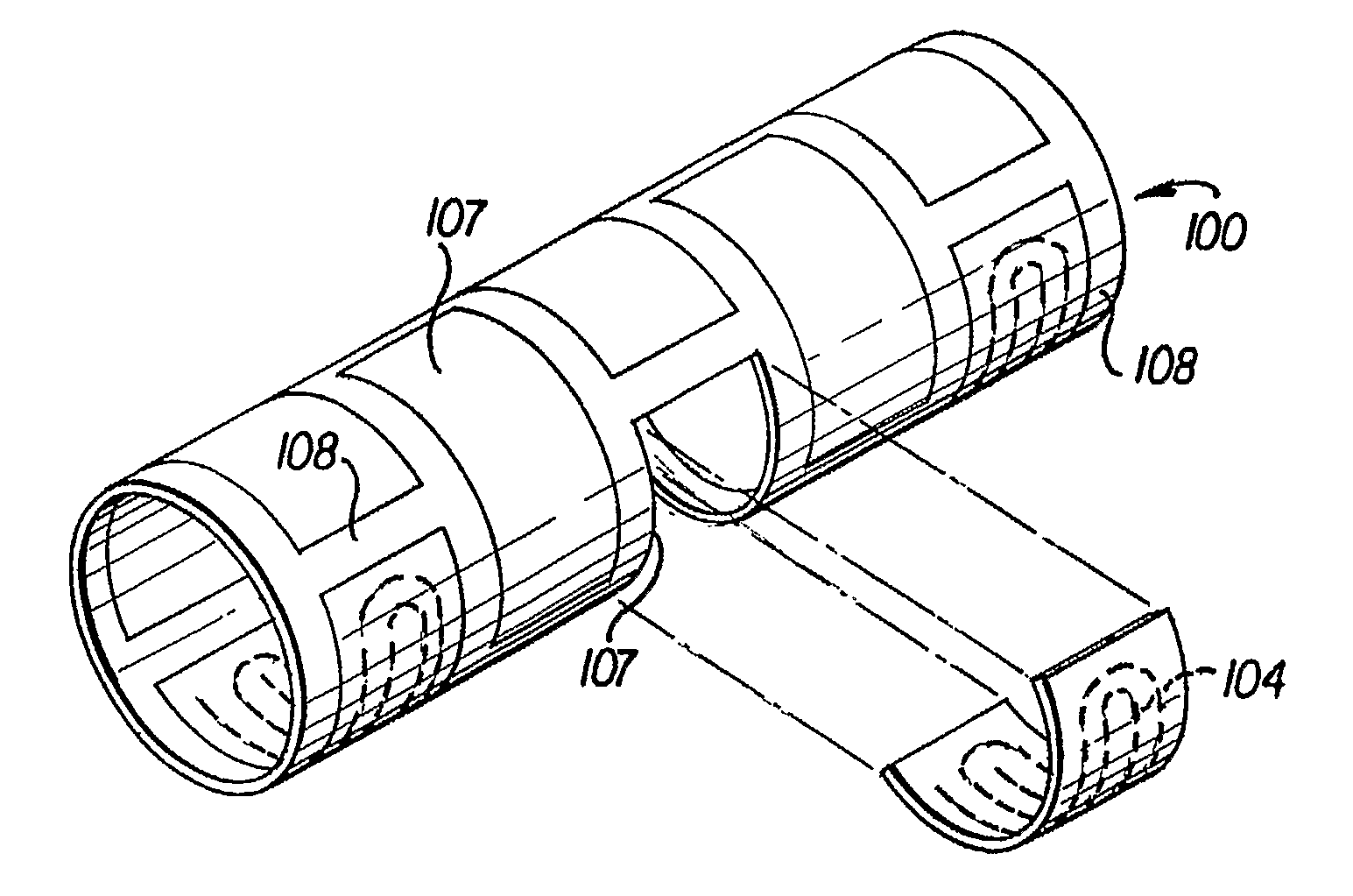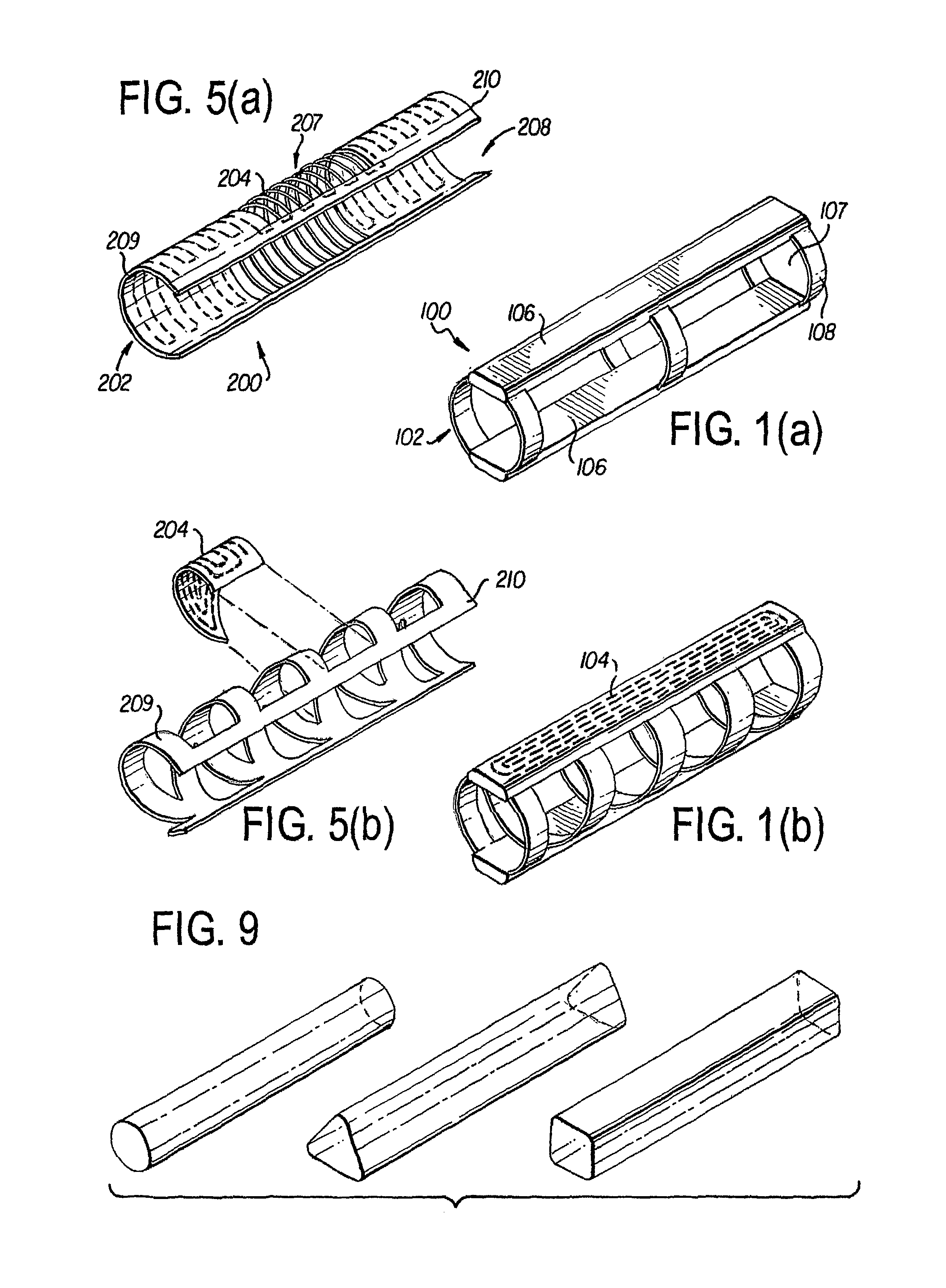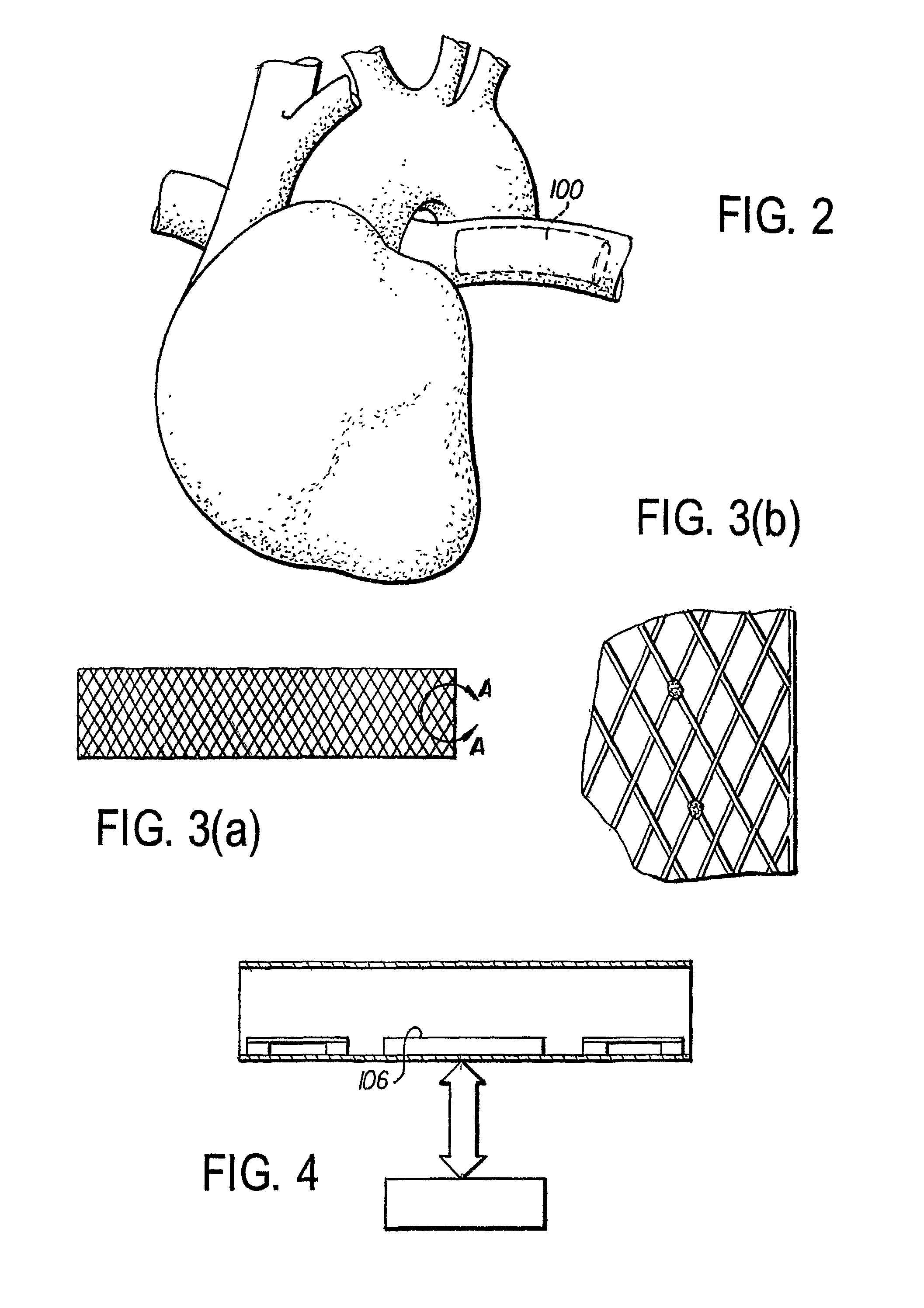Leadless implantable intravascular electrophysiologic device for neurologic/cardiovascular sensing and stimulation
a neurologic/cardiovascular and electrophysiologic technology, applied in the field of intravascular and extravascular devices for sensing and stimulation, can solve the problems of insufficient blood pumping to sustain life, hampered technology described in the patent, perforation of the heart or vasculature, etc., to enhance the specificity and integrity of data being transmitted, reduce noise and artifacts, and control blood flow
- Summary
- Abstract
- Description
- Claims
- Application Information
AI Technical Summary
Benefits of technology
Problems solved by technology
Method used
Image
Examples
Embodiment Construction
[0023]In describing a preferred embodiment of the invention illustrated in the drawings, certain specific terminology will be used for the sake of clarity. However, the invention is not intended to be limited to that specific terminology, and it is to be understood that the terminology includes all technical equivalents that operate in a similar manner to accomplish the same or similar results.
[0024]Referring to the drawings, FIGS. 1(a), (b) and 5(a), (b) show sensing and stimulation devices 100, 200 in accordance with preferred embodiments of the invention. The devices 100, 200 are generally tubular in shape and have a support structure 102, 202, an induction power coil 104, 204 built into the support structure 102, 202, and electronic components 106. The device 100 can be intravascular, as shown in FIGS. 1-4, or extravascular, as shown in FIGS. 5-8. Though the device 100, 200 is shown as having an elongated round tubular shape, it can also have a triangular or square shape, as sho...
PUM
 Login to View More
Login to View More Abstract
Description
Claims
Application Information
 Login to View More
Login to View More - R&D
- Intellectual Property
- Life Sciences
- Materials
- Tech Scout
- Unparalleled Data Quality
- Higher Quality Content
- 60% Fewer Hallucinations
Browse by: Latest US Patents, China's latest patents, Technical Efficacy Thesaurus, Application Domain, Technology Topic, Popular Technical Reports.
© 2025 PatSnap. All rights reserved.Legal|Privacy policy|Modern Slavery Act Transparency Statement|Sitemap|About US| Contact US: help@patsnap.com



